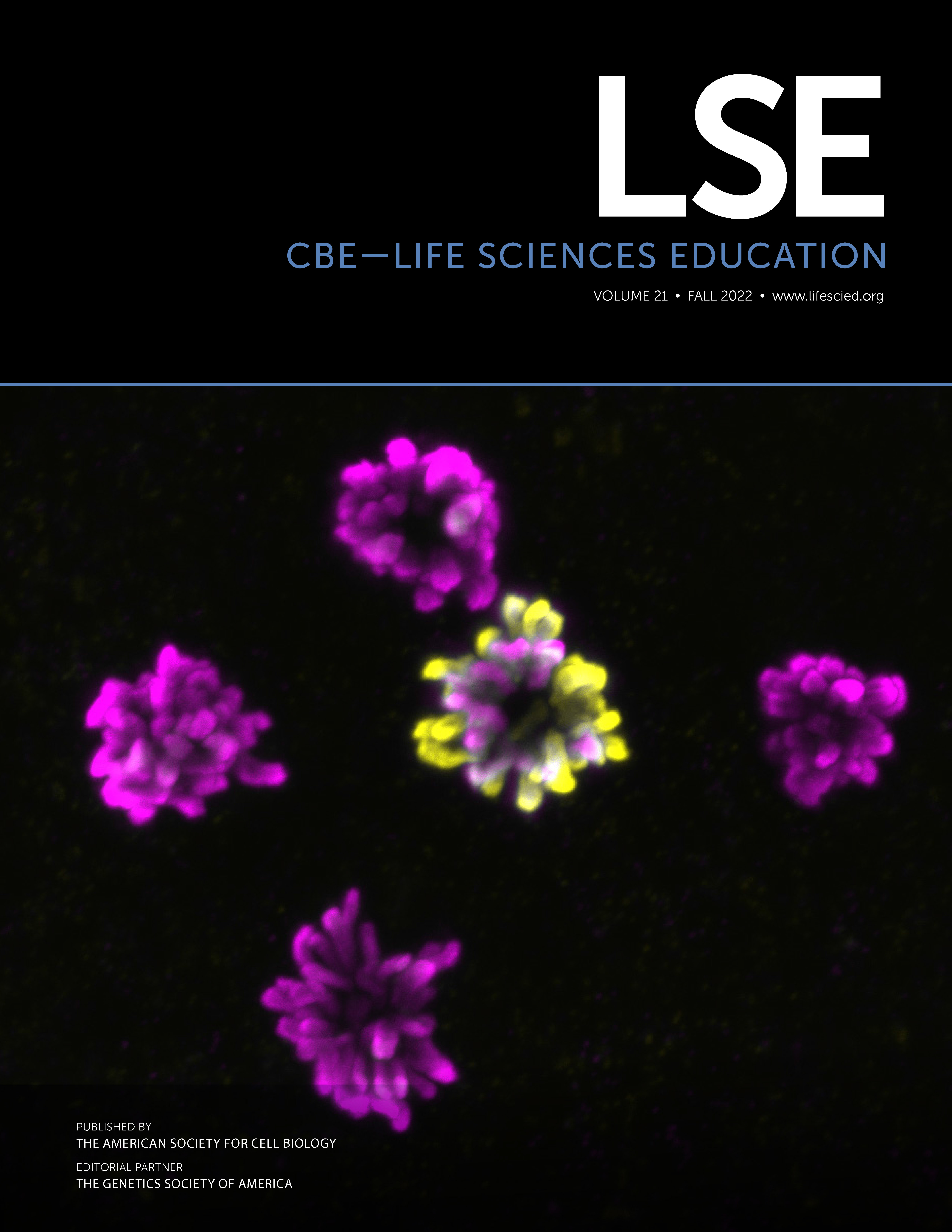Centering the Experiences of Community College Students and Faculty in Biology Education Research
“What would it mean for biology education research (BER) if a distinct group of colleges enrolling nearly half of all undergraduates was left unexamined?”
(Schinske et al., 2017, p. 2)
The “distinct group of colleges” Schinske and colleagues (2017) reference in this question are the community colleges (CCs). There are more than 1400 CCs in the United States that provide students with relatively low-cost workforce training, preparation for transfer to universities, and lifelong learning (U.S. Department of Education, 2017). CCs are mostly public, open admissions institutions that offer associate's degrees and occasionally bachelor's degrees (U.S. Department of Education, 2017). CC students make up ∼40% of all undergraduates in the United States (American Association of Community Colleges, 2021). Most biology majors complete part of their undergraduate education at CCs (Foley et al., 2020), and CCs occupy numerous important positions in the life science education landscape (Fletcher and Carter, 2010; Labov, 2012; Hewlett, 2018). Yet, as implied by the question, CCs are nearly invisible in the periphery of biology education research (BER). Recent estimates suggested that BER papers written by CC authors or reporting on studies conducted in CC contexts comprise only 1–3% of all BER publications (Schinske et al., 2017; Lo et al., 2019).
So what might it mean for BER that CCs have historically been overlooked? Kanim and Cid (2020), p. 1 provide a troubling answer to this question in reflecting on similar issues in physics education research: “Findings from research may not be as generalizable to all student populations as we have previously assumed.” For example, educational innovations and “best practices” developed at universities might operate differently in CC contexts. This would be especially concerning, given that the majority of undergraduates from marginalized and minoritized backgrounds attend CCs (National Center for Education Statistics, 2021). By largely omitting CC contexts, BER could promote strategies that are untested among the populations of students we most hope to empower and also fail to adequately share the perspectives, experiences, and assets of those student populations.
CC articles have always been and will always be welcomed at CBE—Life Sciences Education (LSE), beyond this special issue of the journal. However, to highlight this important study context more directly, we invited the BER community to submit essays and articles to this special issue to showcase some current efforts in CC BER. Two current LSE editorial board members who teach at CCs (J.A.H. and J.M.) were joined by four CC faculty guest editors (B.G., J.D.K., S.M.A., and S.V.) and the co–editors-in-chief (K.D.T., a university faculty member, and J.N.S., a CC faculty member) to craft a call for abstracts and monitor papers submitted to this special issue. This editorial team represents a diverse range of CCs and includes both full-time and adjunct CC faculty. We are proud to present an initial set of CC BER articles at the release time for this issue—more than a dozen articles, appearing in rolling publication from July 2022 onward—and will be appending new papers to this special issue as additional manuscripts complete the publication process.
As for any issue of the journal, LSE seeks papers that address gaps in the existing research literature, use measures with evidence for their validity in the study context, and align evidence with claims (www.lifescied.org/info-for-authors). In some instances, the gap in the literature resides in the study context (e.g., as discussed in Kanim and Cid, 2020). Along those lines, some studies in this special issue look at previously studied phenomena grounded in the context of CCs and centering the perspectives of CC students or faculty. We are excited at the ways these efforts center CC voices, position CC faculty as researchers (as opposed to subjects), and promote asset-based perspectives on CCs.
We recognize that many of the barriers to CC BER described by Schinske et al. (2017) persist and that LSE must do more to facilitate BER in CCs and other underrepresented study contexts. However, we hope this special issue demonstrates that many exciting efforts in CC BER are well underway. We further hope this will stimulate additional conversations among CC/university colleagues, publishers, funders, and other stakeholders regarding ways to center life science teaching and learning in CCs.



